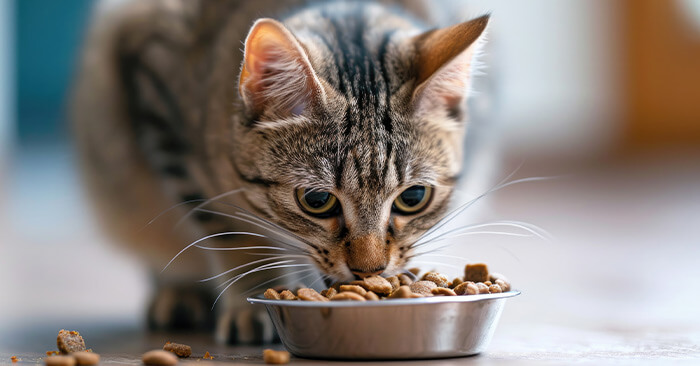Proper nutrition is crucial for your cat’s overall health and well-being. It plays a vital role in supporting various bodily functions, including growth and development from kittenhood to adulthood. A balanced diet provides the energy needed for your cat to be active and playful throughout the day while also strengthening the immune system to ward off illnesses and infections. Furthermore, it helps in maintaining an optimal weight, reducing the risk of obesity-related health issues.
Nowadays, an increasing number of cat owners are making the switch from wet cat food to dry cat food. This transition is driven by several factors. Firstly, dry cat food offers unparalleled convenience. Its long shelf life and easy storage make it a practical choice for busy pet owners. Additionally, many cat owners find dry cat food to be more cost-effective compared to wet food options. In this blog post, we will discuss different reasons why cat owners make this shift, how to deal with resistance to change and other important tips.
Why Is Dry Cat Food A Better Option Than Wet For Your Cat?
- Digestive health: Dry food typically contains more fiber and less moisture than wet food, aiding digestion and promoting overall digestive health.
- Weight management: Controlling portion sizes is easier with dry food, making it suitable for cats needing weight management or prone to overeating.
- Dental health: The act of chewing dry food promotes dental health by reducing plaque and tartar buildup on your cat’s teeth. As a result, cats’ general health improves.
- Cost-effectiveness: Apart from these health issues, dry food tends to be more economical than wet food, making it a practical choice for budget-conscious cat owners.
- Extended shelf life: With a longer shelf life compared to wet food, dry food minimizes the risk of food spoilage and wastage.
- Convenience: Moreover, dry food is easier to store and serve, as it doesn’t require refrigeration and can be left out for longer periods without spoiling.
- Environmental impact: Finally, dry food generally has a lower environmental impact due to its packaging and transportation efficiency compared to single-use cans or pouches of wet food.
What Should You Do If Your Cat Refuses To Try Out Dry Food?
Here are a few tips that you could try out for switching cat food from wet to dry:
- Gradually transition by mixing dry food with wet food: Mix a small amount of dry food with their usual wet food and gradually increase the proportion of dry food over time. This allows your cat to become accustomed to the new texture and flavor gradually.
- Get a variety of dry food brands and flavors: You can also try different brands or flavors of dry food to find one that your cat enjoys. Some cats may prefer certain textures or flavors over others. For instance, you can try Virbac’s VETERINARY HPM® best cat food, specifically developed to meet the nutritional requirements of your feline friends.
- Add moisture to dry food with warm water: Add a touch of warm water over the dry food to enhance its aroma and make it more appealing to your cat.
- Make the food more engaging: Another option is that you can place dry food in interactive feeders or puzzle toys that require your cat to work for their food. This will add an element of fun and stimulation, making dry food more enticing.
- Limit treats and table scraps: Minimize the number of treats or table scraps you offer your cat, as this can decrease their appetite for dry food.
- Stick to a consistent feeding schedule: You should always offer dry food at regular mealtimes and remove any uneaten food after about 20-30 minutes. This helps establish a routine and encourages your cat to eat when food is available.
- Be patient and avoid forcing your cat to eat dry food: Patience is the key; transitioning to a new type of food can take time, so be patient and persistent. Avoid forcing your cat to eat dry food, which can create negative associations.
- Consult a veterinarian if refusal persists or if health issues arise: If your cat refuses dry food or shows signs of health issues, consult with your veterinarian. They can provide personalized advice and rule out any underlying medical conditions affecting your cat’s appetite.
Conclusion
In conclusion, ensuring your cat receives proper nutrition is essential for their health and well-being. The kitten food transition is not easy but impossible if you take the above-mentioned. However, patience and gradual transition methods are key if your cat refuses to try dry food. By following the provided tips and consulting with a veterinarian if needed, you can help ensure a smooth transition and provide your cat with the nutrients they need for a healthy and happy life.





